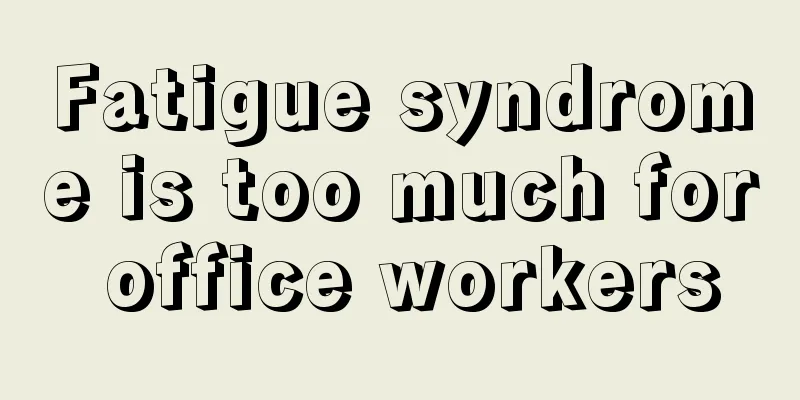Why do I suddenly feel dizzy and nauseous

|
In daily life, we don’t pay much attention to the sudden onset of dizziness and nausea. Over time, we will find that although these symptoms do not seem serious, they often have a great impact on our lives. Dizziness can cause patients to feel nauseous and unstable, which will affect their work and life. Differentiating between dizziness, vertigo, and lightheadedness Dizziness/vertigo is the most common symptom in clinical practice, ranking second or third among the chief complaints of outpatients. In fact, people will experience dizziness/vertigo throughout their lives, which shows that dizziness is common. Outpatient patients often cannot clearly describe vertigo, dizziness, and lightheadedness, and the causes of these symptoms involve multiple disciplines, such as otolaryngology, neurology, orthopedics, geriatrics, etc., which not only causes patients to frequently go to multiple departments and still find it difficult to get a clear diagnosis after a series of examinations, but also causes confusion in diagnosis and treatment for some doctors who do not pay attention to vertigo. For the final diagnosis of the cause of dizziness/vertigo, history collection is the most important component. A reliable history can enable two-thirds of dizziness/vertigo patients to be correctly classified. Therefore, in order for the attending physician to correctly understand the patient's symptom description, standardized medical terms are needed to summarize the medical history and symptoms. Let us first understand the medical concepts of dizziness and vertigo. Dizziness is a general concept that includes the following four conditions: lightheadedness, vertigo, disequilibrium and presyncope. Dizziness refers to intermittent or persistent feelings of unclear brain, lightheadedness, tightness in the head, etc. The symptoms of dizziness may sometimes be a physiological process and not necessarily a pathological mechanism, such as lack of sleep, fatigue, etc. However, high blood pressure, heart and lung diseases, mental illness, etc. often manifest as dizziness. Vertigo is an illusion of motion of static surrounding objects or one's own position. It is mostly a pathological phenomenon, manifested as a sense of rotation of visual objects or oneself, or a feeling of swaying, ups and downs, or a sense of falling. Attacks are often accompanied by nausea, vomiting, and fear of opening the eyes, such as Meniere's disease, vestibular disease, otolithiasis, brainstem lesions, etc. Instability of balance refers to unsteady standing during movement, or dizziness symptoms caused by movement disorders, such as Parkinson's disease, peripheral neuropathy, etc. Presyncope refers to the chest tightness, palpitations, dizziness, black spots in front of the eyes, fatigue, etc. that occur before fainting, which are mostly caused by transient cerebral ischemia due to various reasons. Objective description and recording of dizziness/vertigo and accompanying symptoms can help to make a quick preliminary diagnosis and provide the correct direction for taking necessary auxiliary examinations and treatments in the next step. |
<<: Does nausea in the morning mean pregnancy?
>>: Why do I often feel dizzy and nauseous?
Recommend
How to treat ankle effusion
The ankle joint is the lowest large joint in the ...
What symptoms can diagnose testicular cancer
Cancer is like a nightmare. Every time you think ...
Understand what are the main causes of gastric cancer in life
Cancer is difficult to cure, which is what we hav...
What's going on when my throat hurts and my ears itch?
If you have a sore throat and itchy ears, you sho...
How does small cell lung cancer develop
Lung cancer is a common malignant tumor disease t...
What are the typical symptoms of nasopharyngeal carcinoma?
What are the typical symptoms of nasopharyngeal c...
Endometrial cancer likes these 6 types of women, you really have to be careful
If women suffer from diseases such as polycystic ...
Can purslane cure nephritis? Are there any contraindications?
Traditional Chinese medicine is profound and exte...
What to do if pimples and itchiness appear on your face
When acne first appears on your face, your skin w...
A proven lung cancer prescription with the effects of clearing away heat, detoxifying, resolving phlegm and removing dampness
There are also many proven prescriptions for the ...
How long can a patient with liver cancer live
How long can a patient with liver cancer live? 1....
Dissolve dental tartar
The appearance of tartar on teeth is actually a v...
Is heartburn a precursor to stomach cancer?
Heartburn is not necessarily a precursor to stoma...
What to do if a rusty nail pierces your foot
Many people get their feet punctured, and most of...
How to correct supernumerary teeth?
Supernumerary teeth have a certain impact on the ...









